Franchising, retail, business
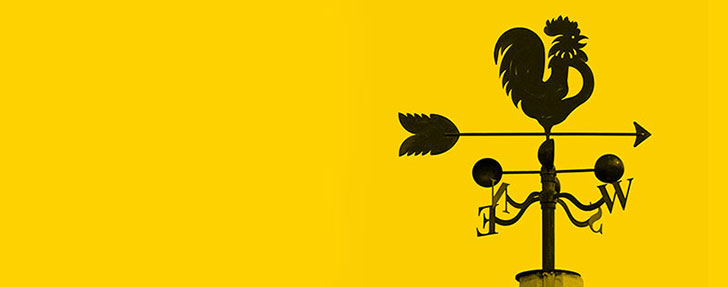
05/11/2014
What will the best brands of the future look like? Landor’s experts from around the world analyzed innovations, changes, consumer behaviors, and attitudes from a multitude of industries and global locales, and emerged with unexpected insights for 2015. Noteworthy and established trends are picking up steam and changing the branding game—from the rise of megacities to back-to-basics naming to personalized everything. Brands that are laser clear on what they stand for—and that never stand still—will lead the way. Here’s what you need to know.
Megacities spur consumer desire for a stronger sense of belonging
Welcome to the age of megacities and mega-developments. Urban growth is exploding at the seams—growing faster, bigger, wider, and taller than ever before. As a result, there’s a rising demand for more distinctive urban environments with a stronger sense of place. Melbourne and Vancouver are just a few of the cities that have bolstered their identities in recent years, drawing millions of tourists and fostering a sense of community. On a smaller scale, Barcelona’s infamous inner district, El Raval, is changing negative perceptions and encouraging local pride with a fresh campaign and identity centered aroundravalejar, a new Spanish verb celebrating the neighborhood’s edgy charm. Looking ahead, branding will play an even greater role in helping to humanize mega developments, alter viewpoints, and bring communities together.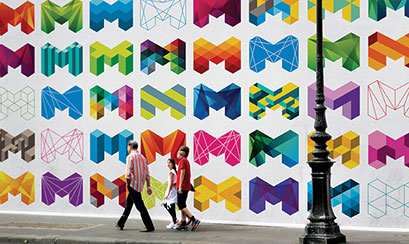
Naming goes super simple
With more noise in the digital marketplace and less time than ever to capture consumers’ attention, brands will continue to streamline the path to sales. That includes a shift back to basic, clear, relevant naming solutions. More monikers will have universal, easy-to-grasp concepts that consumers can instantly connect to (think Uber and Square) and that brands can fully own in meaning and URL. Apple, who finally dropped its iconic “i” naming convention, and Google have already transitioned to this elementary naming approach, placing greatest importance on their recognizable master brands by positioning them first, followed by simple product descriptors: Apple Watch, Apple TV, Apple Pay; Google Glass, Google Wallet, Google Play.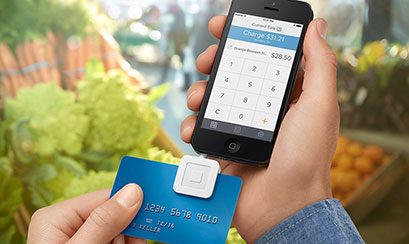
B2B trumps B2C in social media
Move over millennials and consumer brands—the B2B world is fast realizing the usefulness of social media. After all, business is and always has been about building relationships. And what better way to make connections, discover potential clients, share white papers, and engage with communities, stakeholders, and NGOs than on LinkedIn, Twitter, and other dynamic platforms? These tools will become increasingly powerful, go-to resources for the future of B2B. Leaping on this trend, global shipping container company Maersk has become a surprising Twitter darling, sharing news, inspiration, and stunning ship-in-action photos with its 112,000-plus followers, resulting in greater brand awareness and reputation.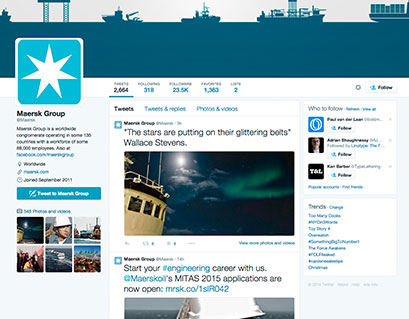
Social responsibility becomes old school
A few years ago brand purpose was all about social responsibility, doing good, and building best practices around diversity, environment, and ethical issues. Today, those factors are nonnegotiable for any successful brand, and consumers expect nothing less. In 2015, this conversation will expand to focus on value and quality with people seeking to work for and buy from companies that provide meaningful, authentic products and services. Whether it’s making all-natural cleaning products and employing and educating at-risk teens, like Manila’s Messy Bessy cleaners, or detailing the step-by-step, rigorous process of how quality tees are perfected in apparel brand Everlane’s U.S. factories, a standard of excellence beyond profitability will be the new norm.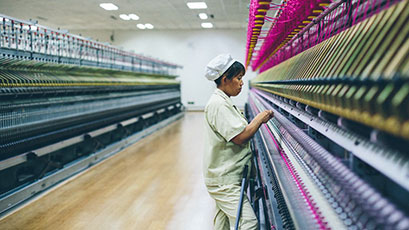
Personalized marketing is bigger than ever
Good-bye mass distribution, hello niche markets. Thanks to advances in capturing consumer data and breakthrough manufacturing techniques that make smaller production runs more economical, businesses will be on the fast-track to create specialized offers and subbrands to meet consumers’ desire for personalized products. Honing social media listening, figuring out how to best leverage big data, and responding ASAP to changing customer wants will be key to competing with nimble businesses already on this rapid specialization trend. Holiday Inn, which was founded on consistency, is starting to shift its brand strategy toward more customized experiences that meet individual needs—from business travelers and families to young couples and adventurous singles. Coca-Cola proved it was a master of personalization with the Share a Coke campaign in the United States, for which it printed bottles featuring 250 popular names, letting consumers search for their name on-shelf. Coca-Cola Israel took the trend a step further, printing 2 million labels individually designed by consumers.
Experiential marketing wins greatest consumer loyalty
Getting people to love your brand is increasingly less about product benefits and more about creating unique, meaningful experiences at every possible touchpoint. In other words, those that bring mobile, online, and in-store experiences together will be miles ahead in building community and loyalty. Tesla's Hong Kong Design Studio was built for hands-on adventure-—not just the take-it-home kind. While you won't be able to drive off with your very own, you can do just about everything else to get the full-throttle experience—from 3-D car customization on touchscreens to sampling real materials to taking the sleek wheels for a spin.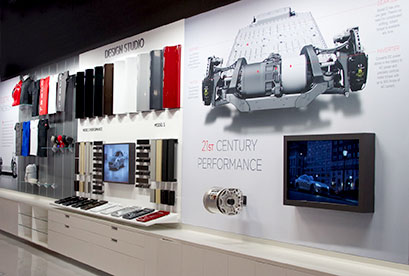
Brands speak more like real people
In today’s world, you can’t sell without a story—and it better be authentic. Taking communications to the next decibel, brands will be pumping up their personality to engage with consumers on more human terms. We’re talking plain, straightforward, hey-I’m-a-person-just-like-you honesty in communications. The oral care line Hello Products has rocked the hygiene market by making toothpaste and mouthwash sound utterly friendly and inviting. Zipcar has zoomed past the rental car competition with an approachable voice that speaks like your best bud. With technology exploding evermore opportunities to touch consumers, we’ll see even the smallest messages—from automatic alerts to texts and Tweets—infused with more emotion.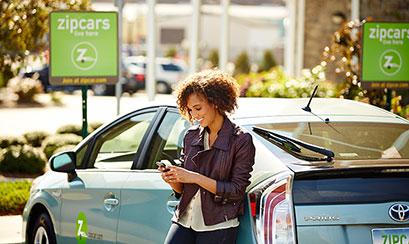
Spotlight on China
The Chinese consumer comes of age
In 2015, marketers in China will have to take a cue from academics and economists and familiarize themselves with rebalancing. The concept, long bandied about in the ivory tower, is coming to the streets. But what is it? The idea is simple—as labor costs increase, profit margins shrink and a reliance on exports and foreign capital investment for economic growth becomes untenable. To avoid stagnation, domestic household spending must begin to take on some of the burden.
Making rebalancing a reality is more difficult. Household consumption as a percentage of GDP is around 37 percent, far lower than the 55 percent seen in most developed nations. However, in 2013, the Xi Jinping administration laid out an ambitious plan to boost consumption, including greater access to credit, property rights reforms, and the development of shopping holidays and destinations.
Marketers need to be aware of three major trends to take advantage of this shift towards consumer consumption. First, new policies are emphasizing growth in western Tier 3 cities, so these traditionally underserved areas must not be ignored. Second, access to personal credit will increase demand for affordable, everyday luxuries. Finally, a key feature of new policy is encouraging interest in culture and entertainment. This has increased the Chinese consumer’s interest in novelty and variety in the goods they buy—creating an incredible opportunity for consumer brands.
Spotlight on finance
Finance enters the mobile age
Move over plastic. Step aside wallets. Mobile payment has finally gone mainstream thanks to the launch of Apple Pay. But what does this mean for the future of financial brands?
As consumers begin phone swiping purchases and leaving their logo-stamped bank and payment cards behind, transactional providers will become less visible in the process. As a result, financial institutions will have to continue to work hard to sustain customer relationships and remain indispensible to consumers.
Mobile payment is just the cusp of on-the-go financial solutions. In 2015, we’ll see the rapid outcrop of innovative new apps and sites that help consumers manage their financial lives remotely, like financial aggregator Mint.com and DIY wealth management planner Betterment.com. To keep up with these new players, earn consumer confidence, and deliver the seamless experience connected users expect, brands will need to build a stellar collection of trusted financial partnerships, retool their engines with rock-solid data security, and revamp user experiences for intuitive, real-time transactions.
Spotlight on beauty
Consumers declare their own definitions of beauty
What’s in vogue for 2015? Consumers continue leading the charge for self-expression and individuality, with real and imagineered beauty trends manifesting on opposite ends of the transformation spectrum. The beauty brands that face up and authentically join the conversation will experience the greatest success.
Dove’s 2004 Campaign for Real Beauty spurred a revolution of body acceptance, and this desire for untouched, natural beauty remains top brow for consumers. Polished perfection is out. Confidence, reality, and individuality are in. It’s not about transformation, but being the best version of you. Joining the band of companies who ditched Photoshop and size-zero models, lingerie brand Aerie launched The Real You Is Sexy campaign; while skin-care line Dermablend created the Camo Confession, a series of compelling ads where women take off their makeup to reveal their true selves. In the coming year, we’ll see even more products, campaigns, and social media discussions on acceptance, health, and dissent against a manufactured ideal.
Countering the real beauty trend is the desire to push transformation to new frontiers. It’s about no-limits beauty and the mindset that given the right tools, technology, and tutorials (like YouTube star Michelle Phan’s radical makeup how-tos), you can become whoever you want to be. We’ll see more brands taking advantage of new technologies and bringing self-expression to radical heights like Laser Girls’ outrageously wild 3-D nail art and Mink's 3-D revolutionary printer that lets consumers print their own custom makeup.
Spotlight on packaging
Packaging shapes up for millennials
As millennials drive the market with a strong-as-ever desire for local, artisanal, and personalized goods—and the meaning and values behind them—trends in packaging are evolving and innovating to meet their needs.
For consumers today, quality has become synonymous with handmade. As a result, mid- and higher-tier mass-market goods are shifting their design focus away from sleek visuals and delicate typography toward a pre-digital era vibe. Expect to see shelves flooded with hand-lettered type, natural materials, letterpress, stamping, and other techniques that emulate the made-by-hand look. Shaking up the wine category, Pernod Ricard’s bold new Dead Bolt brand features a tattoo-inspired logotype that helped the label double its sales target within the first year.
Label reading, facts-up-front, brand origin stories. In the new world of branding, there’s no such thing as TMI. Consumers want the full behind-the-scenes narrative to make informed decisions and buy value-resonating products. To meet this demand, brands are transforming their packaging to make it quick, clear, and easy for consumers to learn all they can about their products. Stone Creek Coffee’s popular Lab Series goes so far as to include the elevation, harvest date, and name of the farmer who grew the beans.
Faster, cheaper, custom production innovations are creating exciting opportunities to connect with consumers, stand out in the store, and bring limited-edition products to shelves in a jiffy. From crowdsourced flavors that support social media campaigns to memorable 3-D modeling structures that challenge industry norms, versatile packaging is the wave of the future. For example, with its distinctive pirate-shaped and weathered glass jug, Captain Morgan 1671 special-edition blend exceeded all sales expectations.
Fonte:http://landor.com/#!/talk/articles-publications/articles/landor’s-2015-trends-forecast/